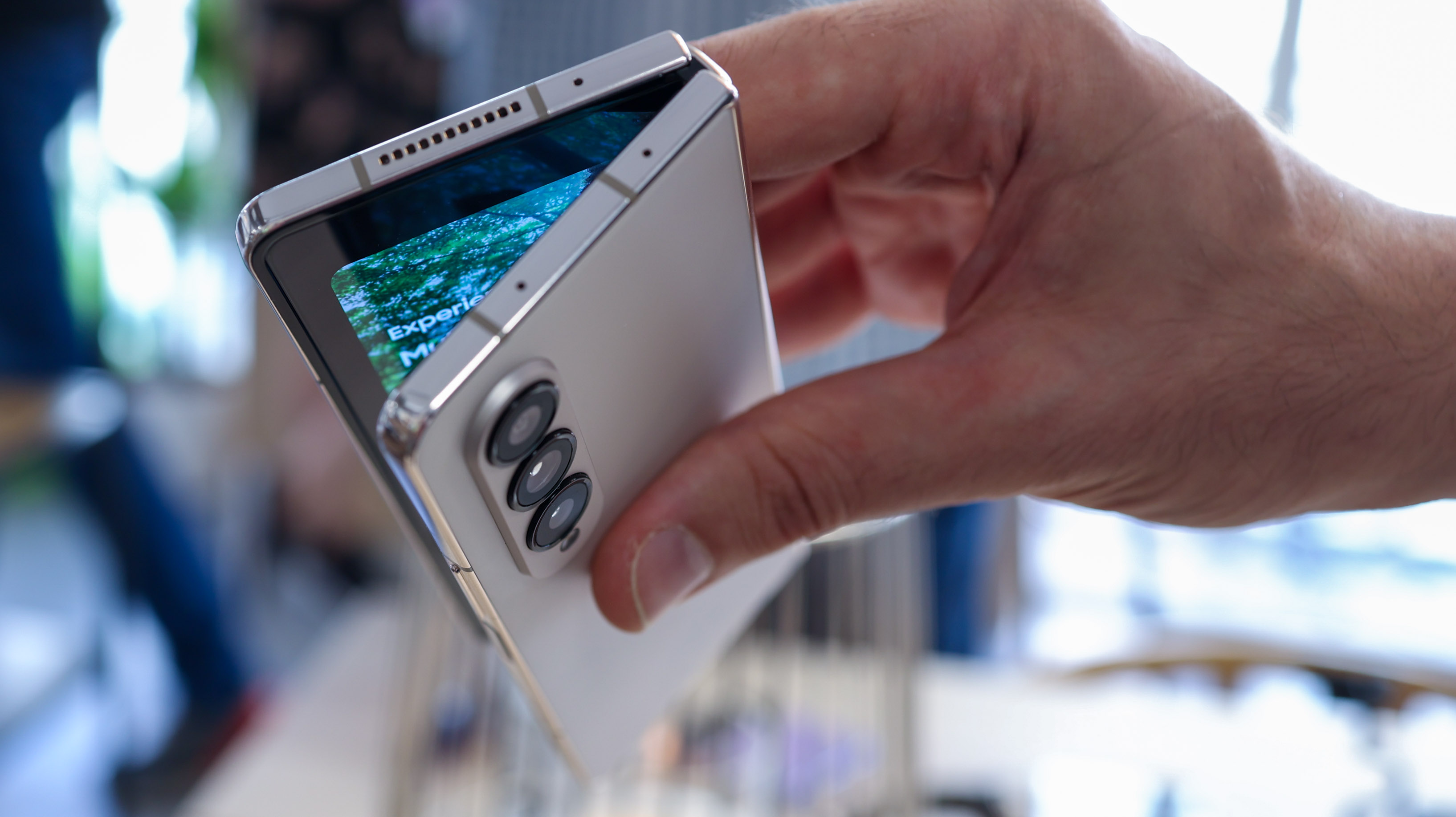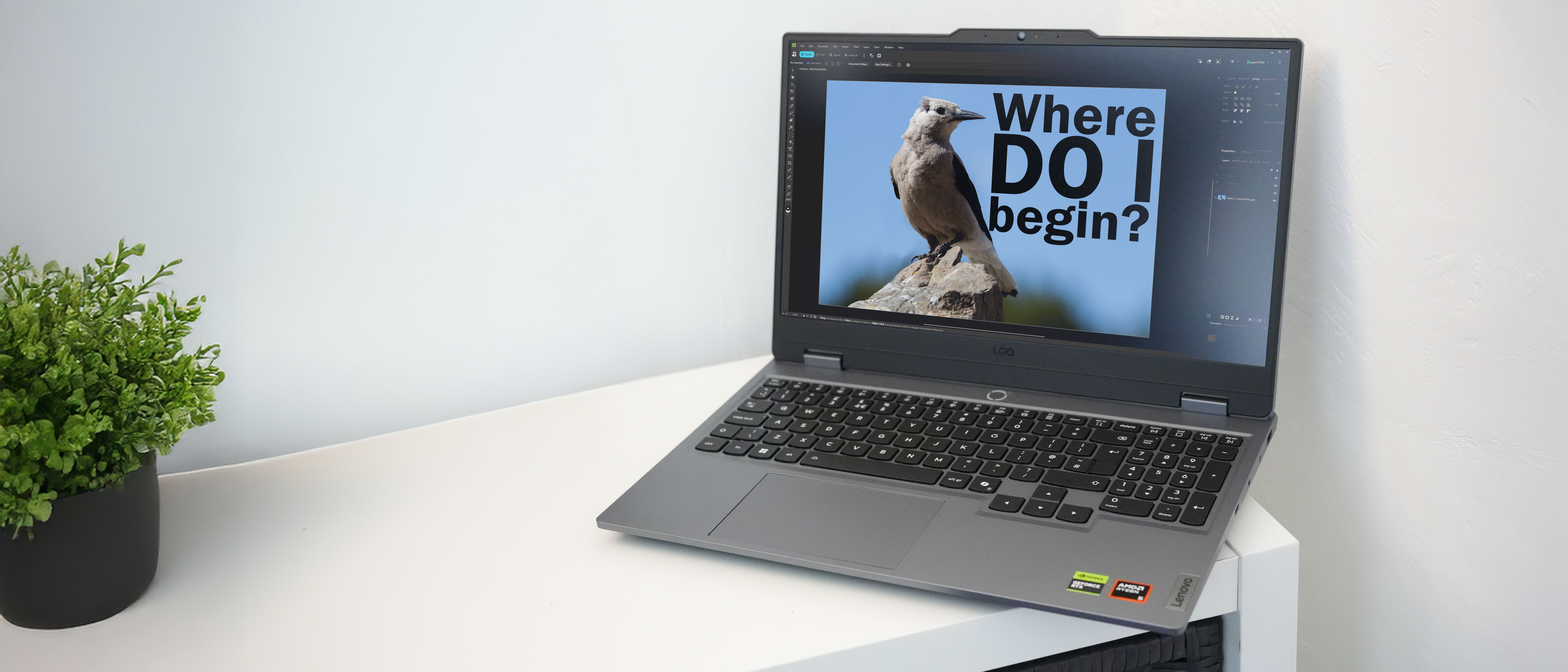Early Verdict
You'll notice there's a 0 here in the score box, don't fret, this hands-on pre-review is based on our first impressions of the Samsung Galaxy Z Fold 4 – check back in the coming weeks for our full review. While it's an incremental update, the Samsung Galaxy Z Fold 4 improves upon a winning formula, bringing back the water resistance, Wacom pen input, and styling that made the Z Fold 3 a mighty foldable, and adding hardware improvements and software flourishes.
For
- Water-resistance
- Flagship-grade power
- Premium design
- S Pen support
Against
- S Pen not included with phone
- Cameras aren't best-in-class
- High price tag
Why you can trust Creative Bloq
It's too early to post a full review of the Samsung Galaxy Z Fold 4, though we've used the phone for a few hours, had a quick sketch on it, and have also been using last year's Z Fold 3 for months. We'd say we're in a good position to share a comprehensive first impression – and check back in the coming weeks for the full verdict.
If you want a foldable phone in the UK or US, your options are limited to Samsung or Motorola. Given Moto's yet to launch an easy-to-recommend RAZR – its foldable line, Samsung's Z Flips and Z Folds have the monopoly on your realistic choices.
While the Galaxy Z Flip 4 has been announced alongside the Fold 4, it's Samsung's lower-cost foldable, going after nostalgia-seekers and style-conscious buyers. The Z Fold 4, by contrast, has its sights set on power users and creatives, loaded up with Wacom screen tech, 4,096 levels of pressure sensitivity and a two-in-one, smartphone/tablet design.
Updated with refined styling, wider screens and more power, not to mention a souped-up interface, does Samsung still have its finger on the foldable innovation pulse? Or does the Z Fold 4 represent the smartphone maker slowing innovation down with samey hardware in the face of no real competition?
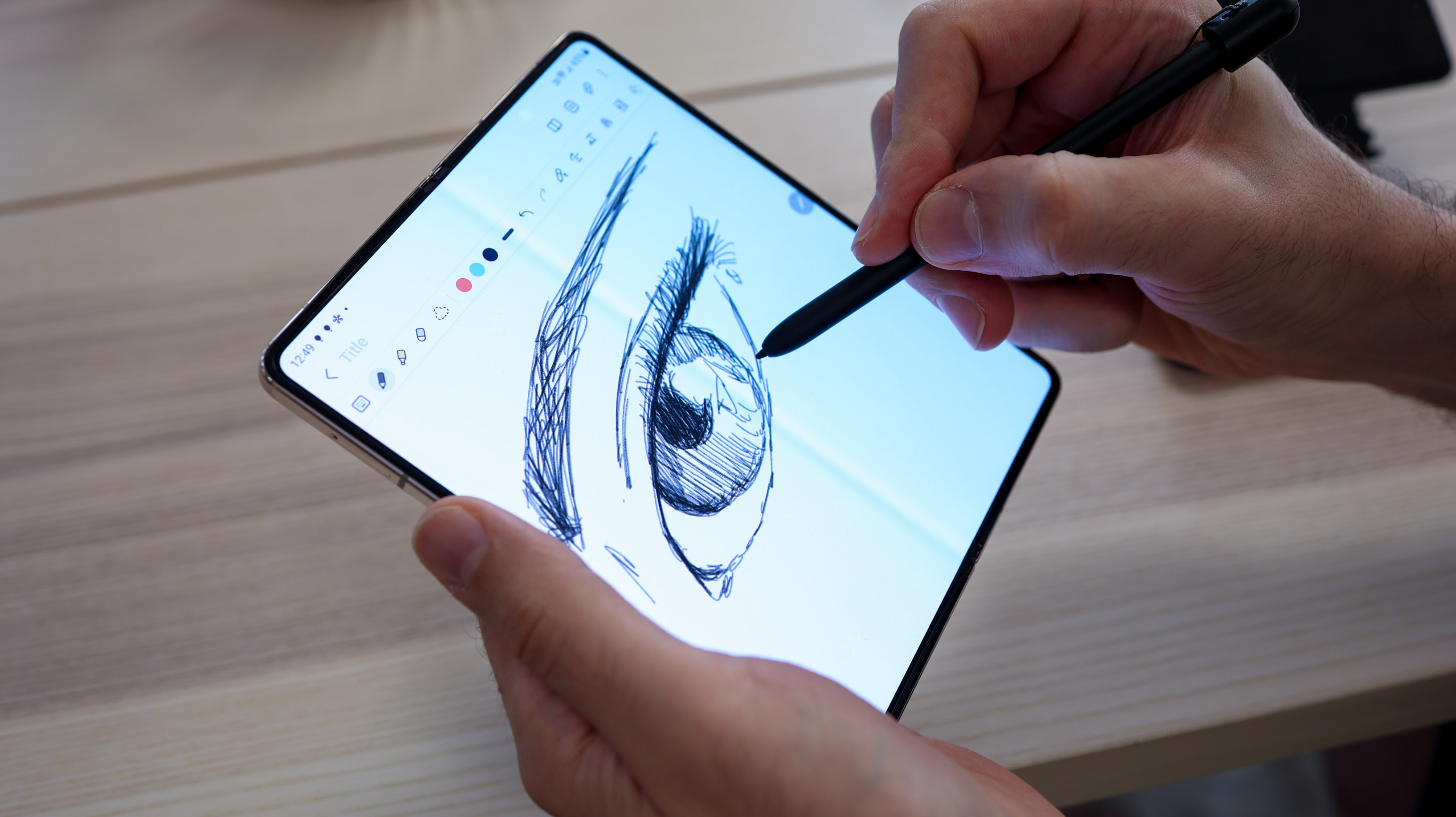
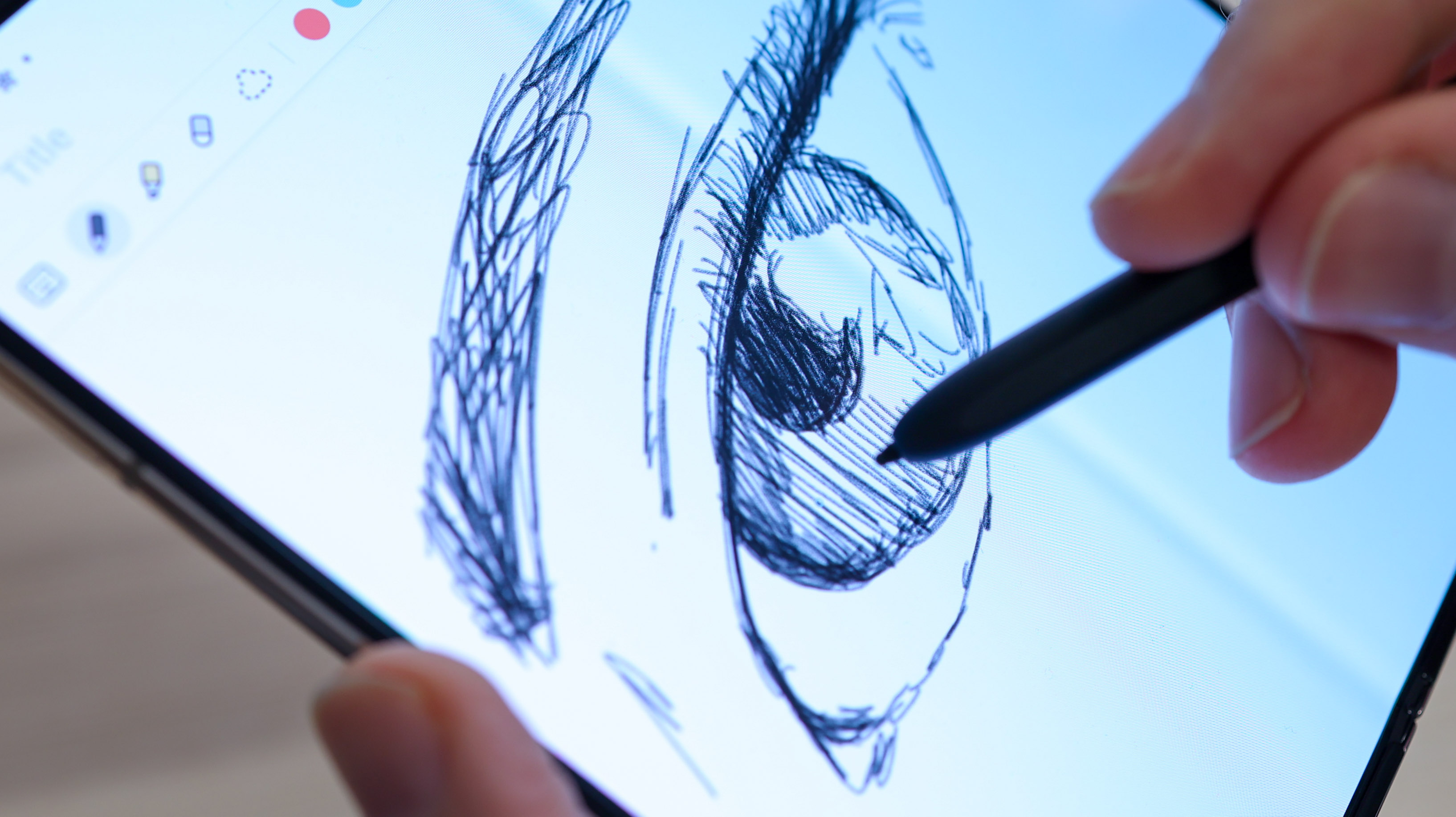
Samsung Galaxy Z Fold 4: design and screens
Fourth time around, and Samsung has brought back the same design it first introduced on the Galaxy Fold in 2019, but with upgraded features, adding a larger, more usable front display, and a tougher and improved styling to the line. While the Z Fold 3 was making waves as the first smartphone to launch with an IPX8, water-resistant rating, the Z Fold 4 is less headline-grabbing, but that doesn't make it bad.
Thinner and lighter than any fold before it, while the second Galaxy Fold weighed 282g, the Z Fold 3 weighed 271g, and the new Fold 4 weighs 263g. For context, the iPhone 13 Pro Max weighs 240g – just 23g lighter. At 3.1mm shorter than its predecessor, the Z Fold 4 should also be more pocket-friendly too.
Samsung has managed to increase the width of the screens without widening the phone. How? By reducing the hinge size. Given one of the big criticisms levied against past Z Folds has been unwieldy, overly tall front displays – this can only be a good thing.
Daily design news, reviews, how-tos and more, as picked by the editors.
Quite clearly, Samsung is in the refining rather than revolutionising phase of the line's design, and the Z Fold 4 represents the form factor at its high point thus far; it's more ergonomic than ever to use without the need for extra bulk.
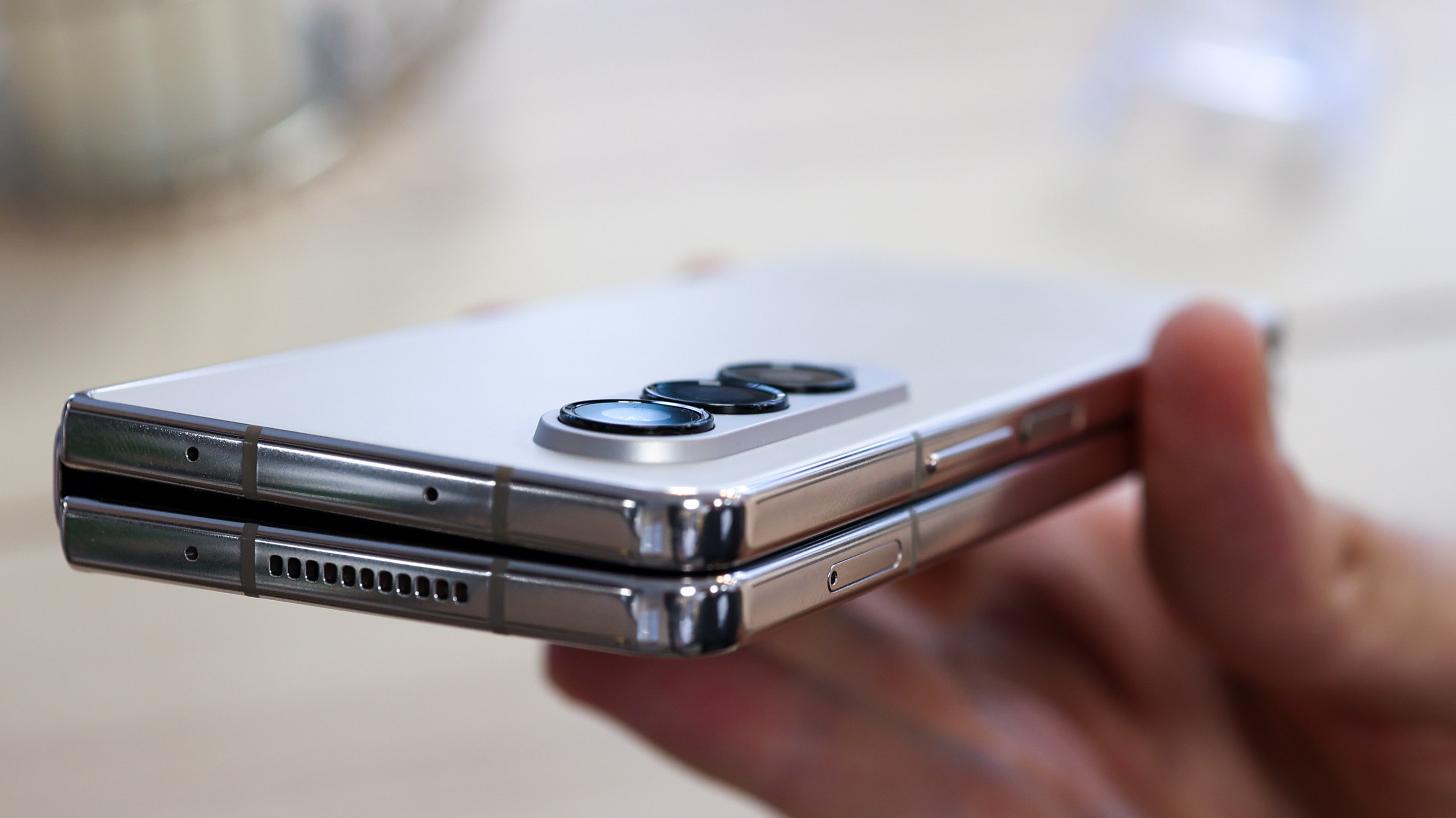
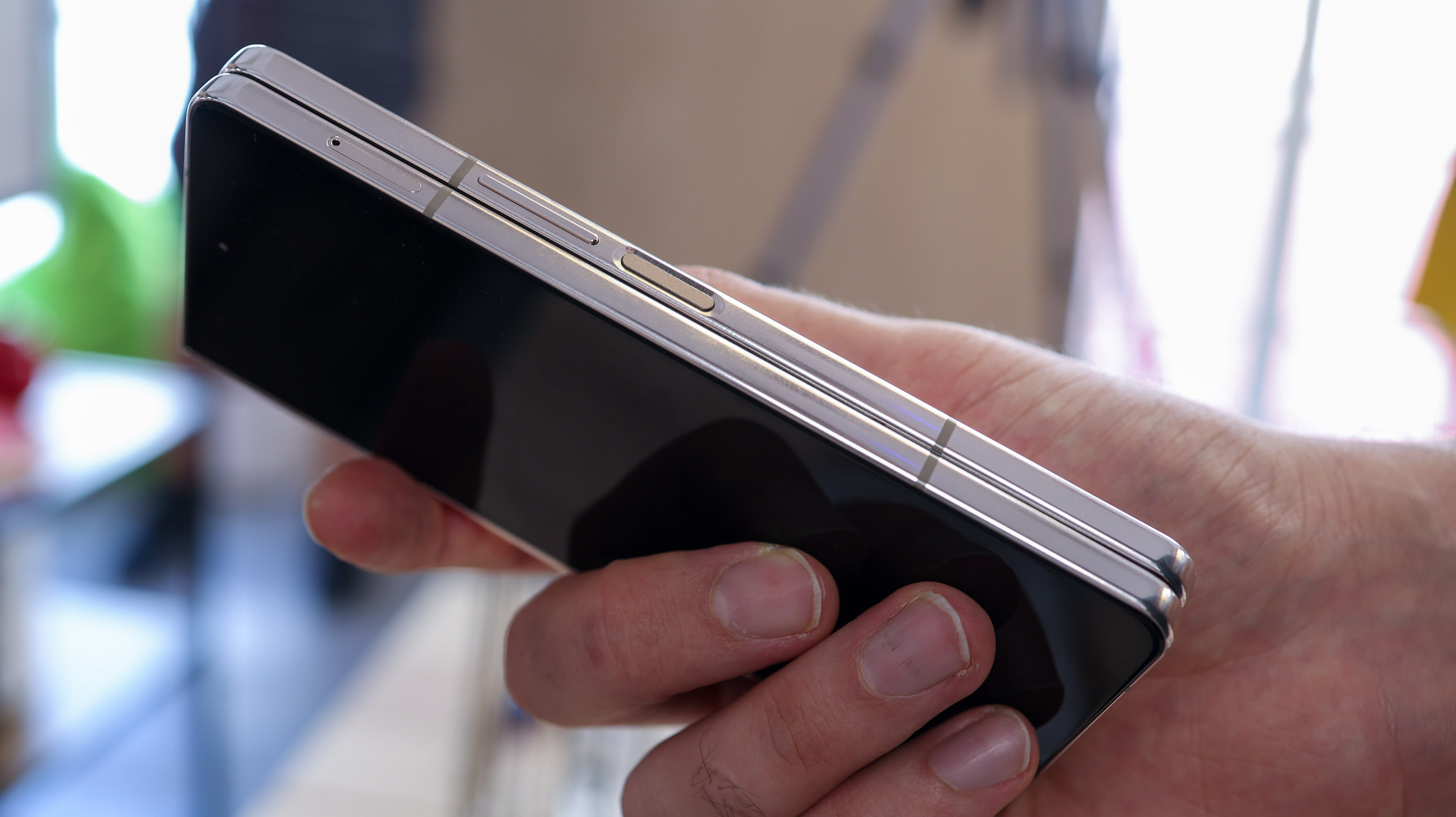
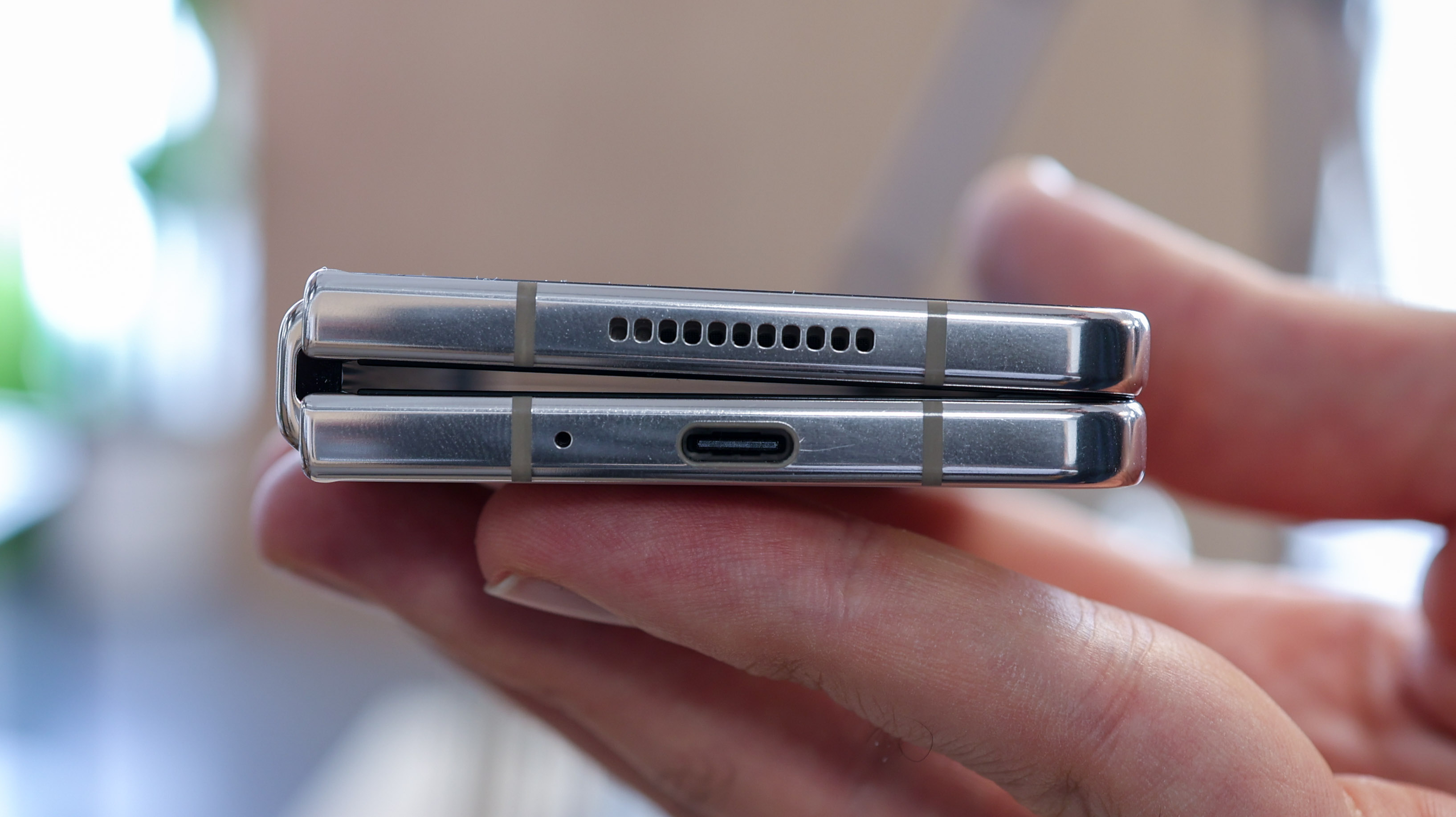
Ports and buttons are identical to last year's Galaxy Z Fold 3. When closed, there's a power button on the right, a volume rocker above it and a SIM card slot as well. At the base of the phone, the USB-C port and one speaker, with the second speaker at the top of the phone.
There's a triple camera mix around the back of the phone, and the matte, glass rear looks lustrous when it catches the light just right, but enjoys a subtle, diffuse finish the rest of the time. Available in three colours, Phantom Black, Grey Green, and Beige, Samsung's launched matching S Pen Fold Editions so you can keep your whole setup looking cohesive.
Samsung Galaxy Z Fold 4: software and performance
Running with the latest 2022 Android power, a Qualcomm Snapdragon 8+ Gen 1 – the same found in the OnePlus 10T, and matched with a healthy 12GB RAM, you shouldn't expect any slowdown from the Galaxy Z Fold 3. With full access to the Google Play Store, as well as a number of Samsung apps pre-installed, including S Note to kick start your S Pen journey, expect excellent app support too.
A few updates to the phone's interface make the Z Fold 4 a superior multi-tasking tool when compared to most mobiles, with an iPadOS, or Windows-style taskbar at the bottom of the screen. This makes it easy to drag one app into either side of the tablet display, so you can work across two apps easily.
Samsung also supports floating window support for even more apps to run simultaneously, and if you plug the Z Fold 3 into an external monitor, it'll fire up DeX, a desktop interface.
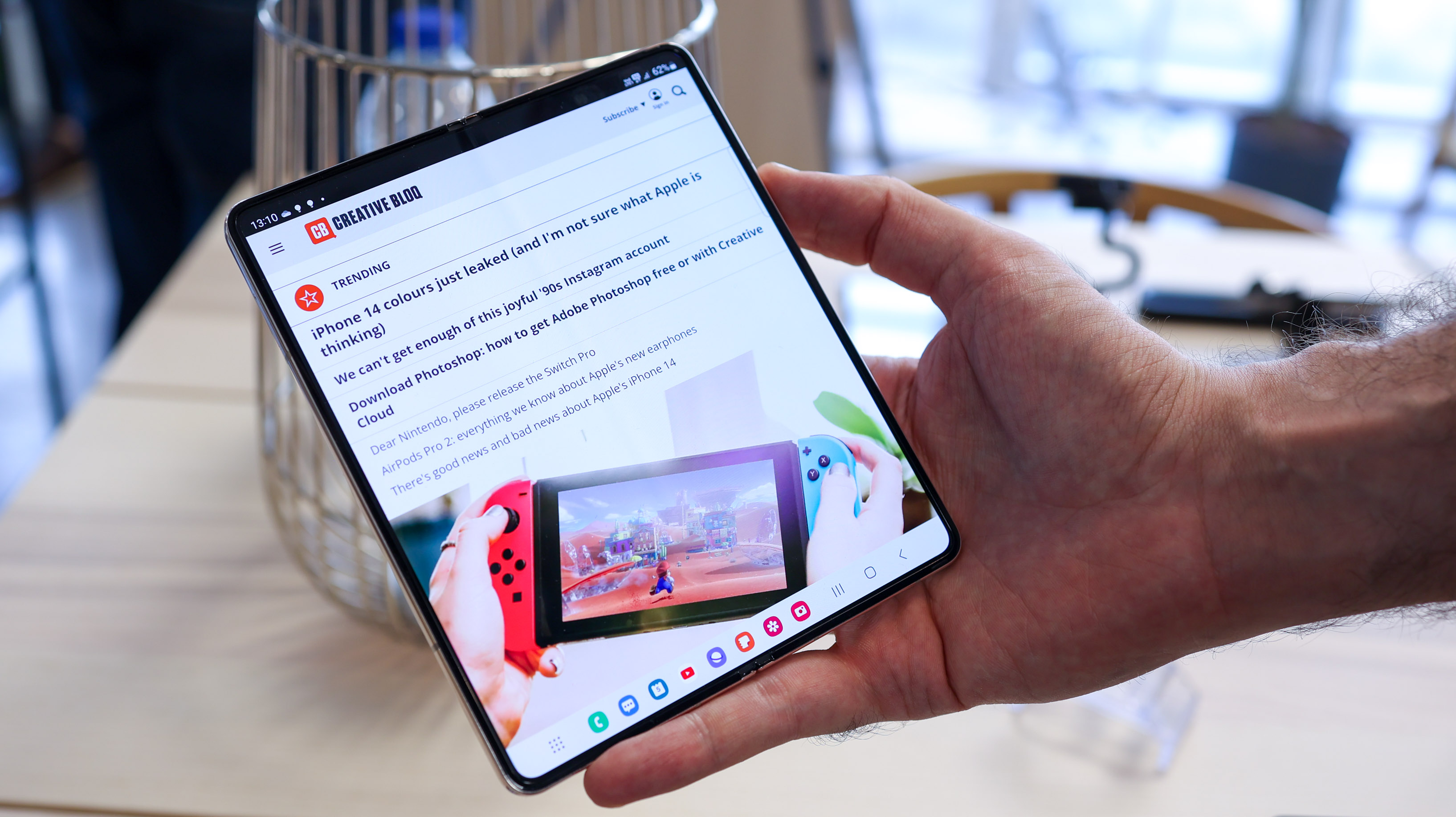
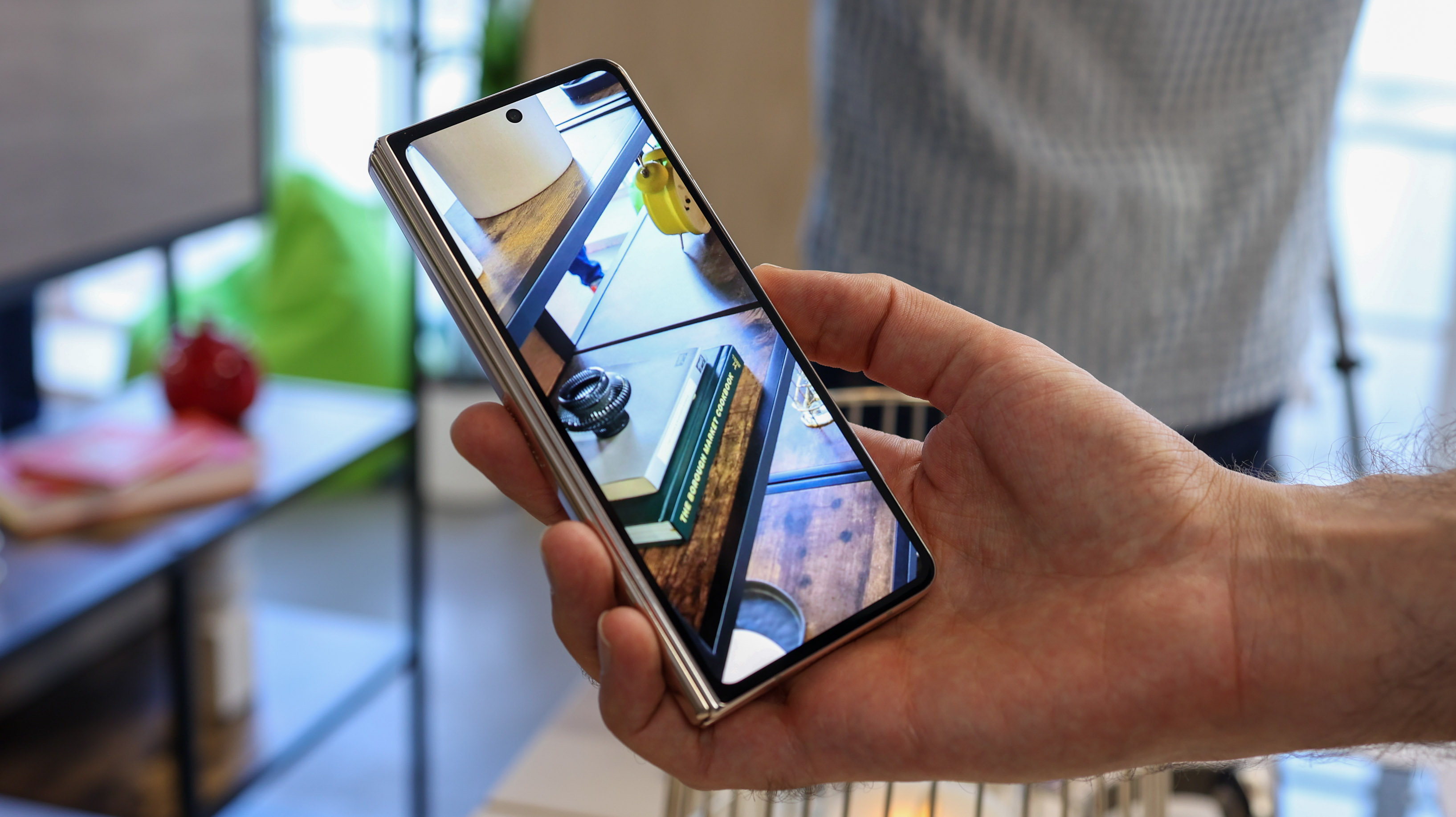
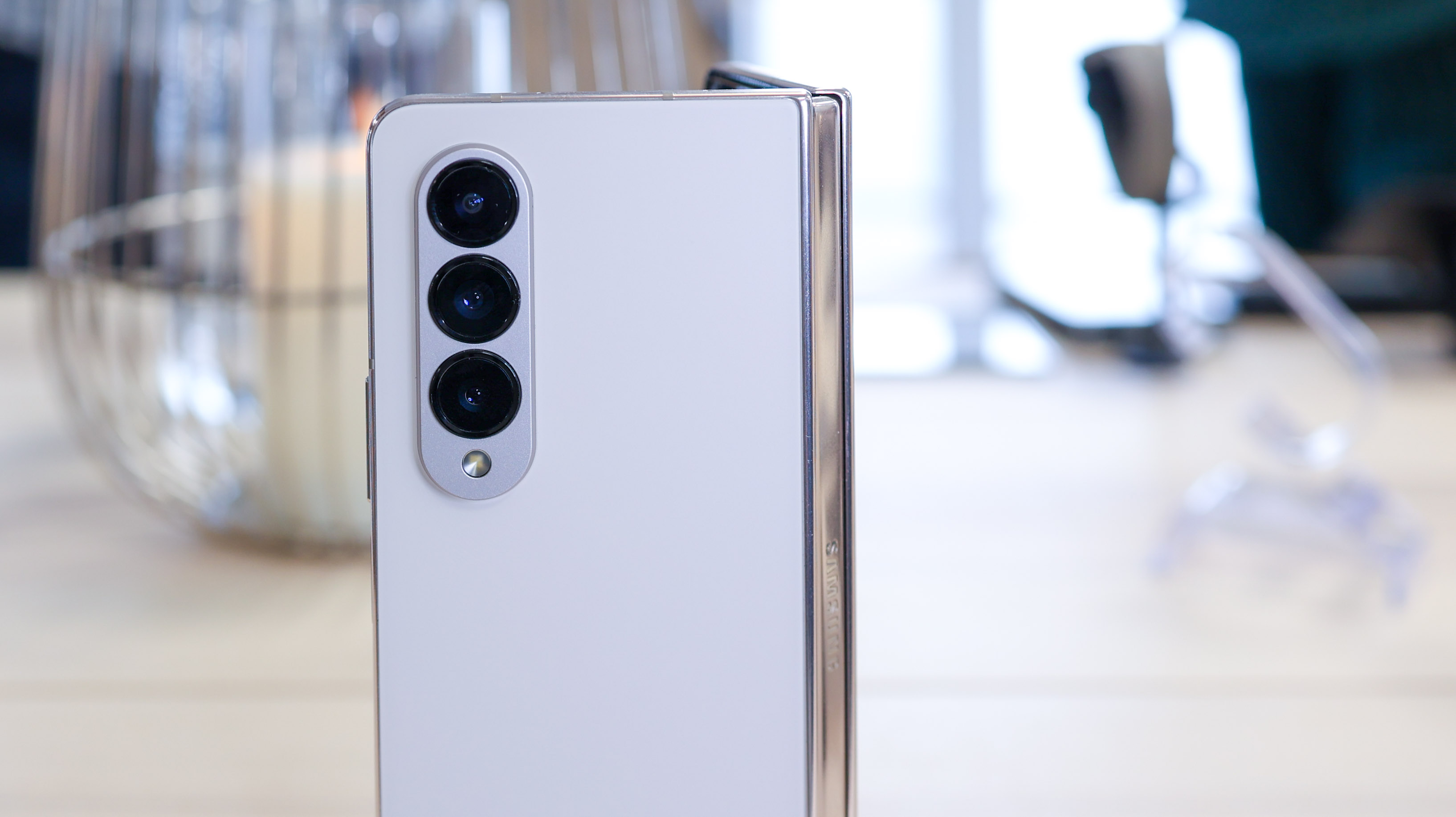
The phone's front screen measures 6.2 inches, sports a high-quality AMOLED screen with a 120Hz refresh rate, and no pen support – but naturally, it's finger-friendly. Unfurl the Fold 4, and the inner screen beams to life, measuring 7.6 inches with a smooth 120Hz refresh rate.
The phone's flexible AMOLED may be hardier than folding screens we've seen in the past, but it still requires you to use a special S Pen to write on it – one with a spring-loaded nib, available as a separate purchase to the phone.
With the same sized 4,400mAh battery as last year's phone, as well as fast wired and wireless charging, we're delighted to see Samsung's shrunken design doesn't mean a shrunken battery capacity.
Samsung Galaxy Z Fold 4: cameras
There are a whopping five cameras dotted around the Z Fold 4 – three on the back, a selfie camera nuzzled into the front display, and another in the inner display. The inner display's camera is interesting. From most angles, you'd be forgiven for thinking it isn't there. After all, it's an almost invisible in-display camera. As you can see in the photo below, though, from other angles, it's very evident.
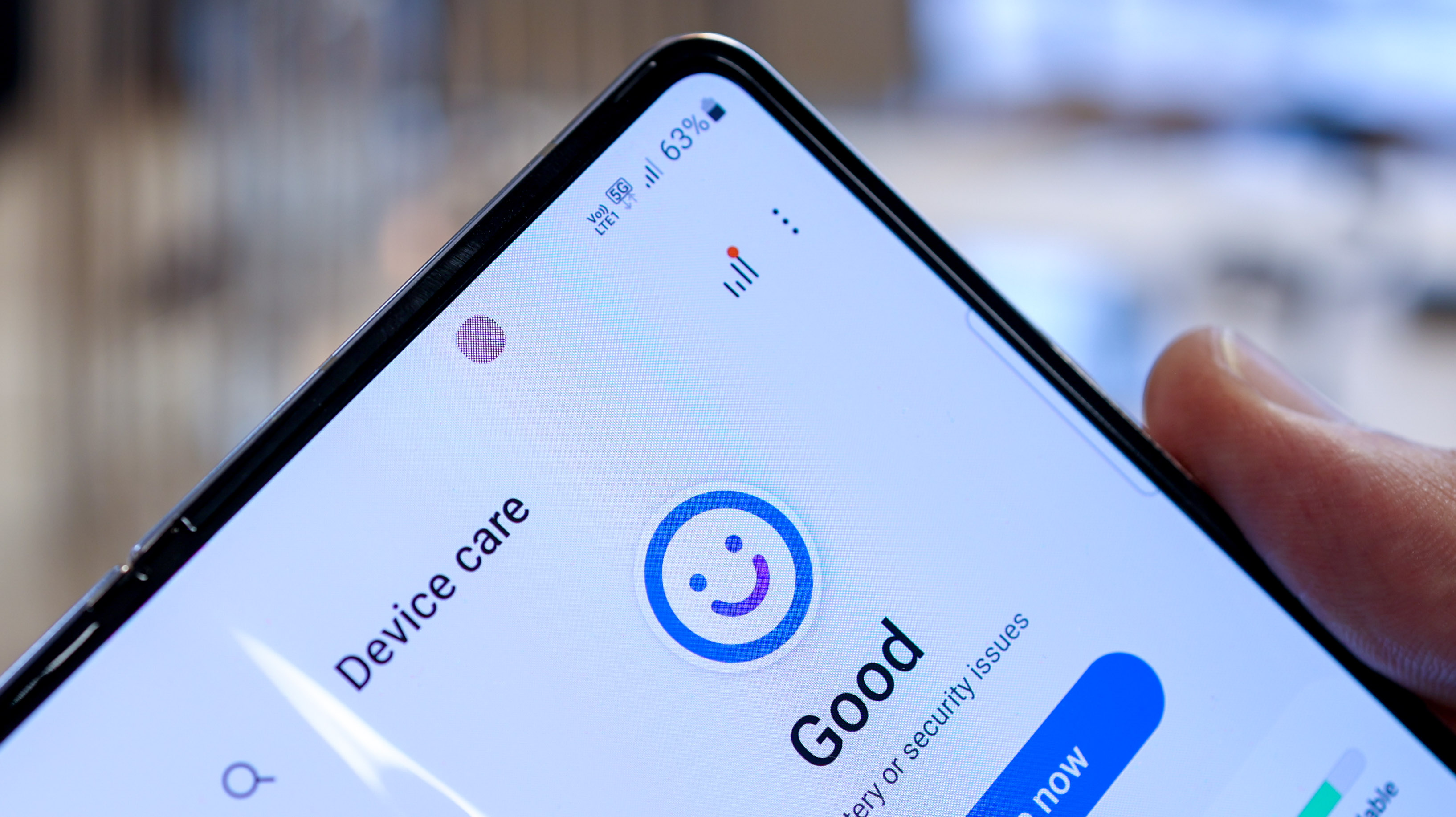
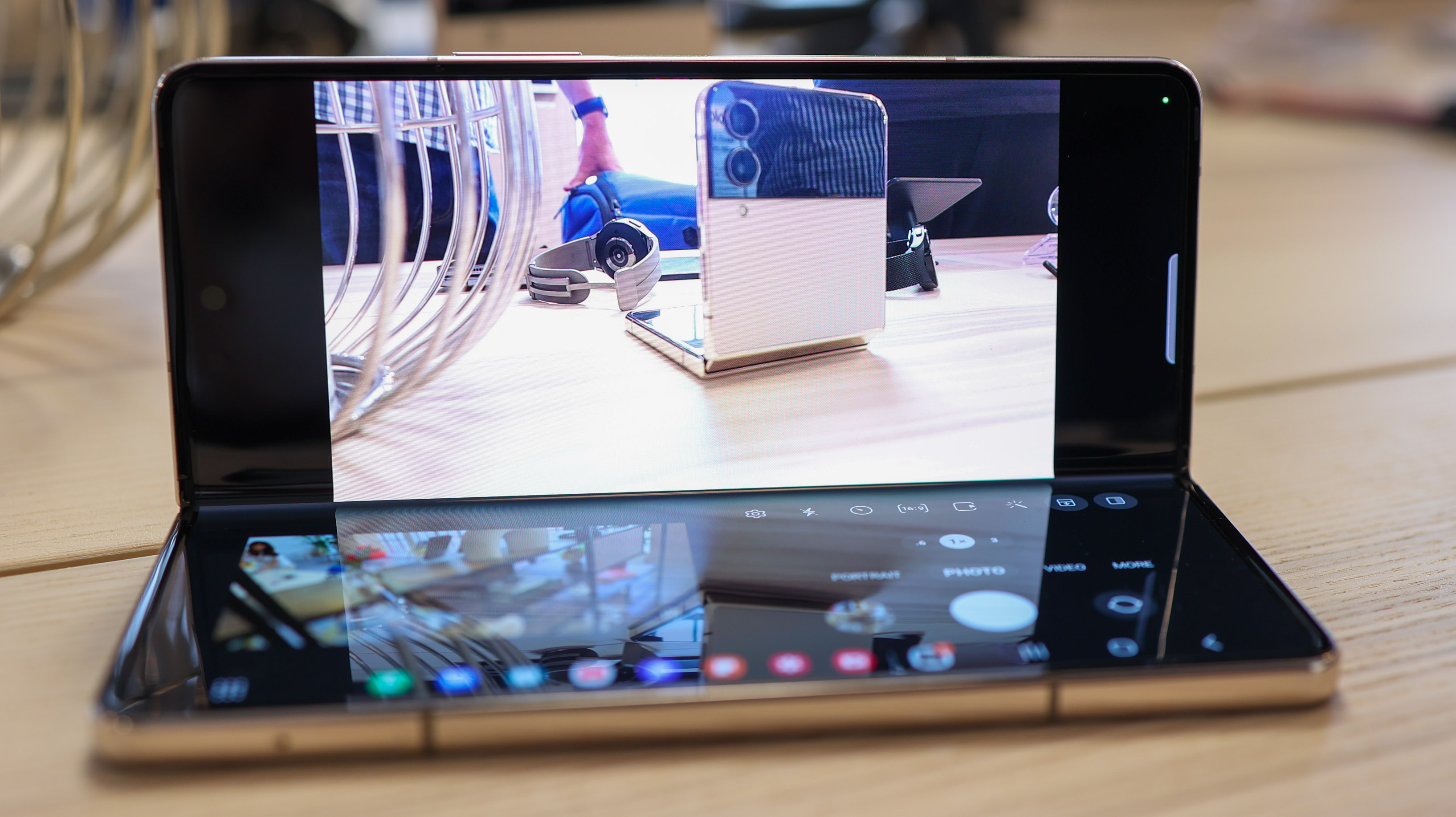
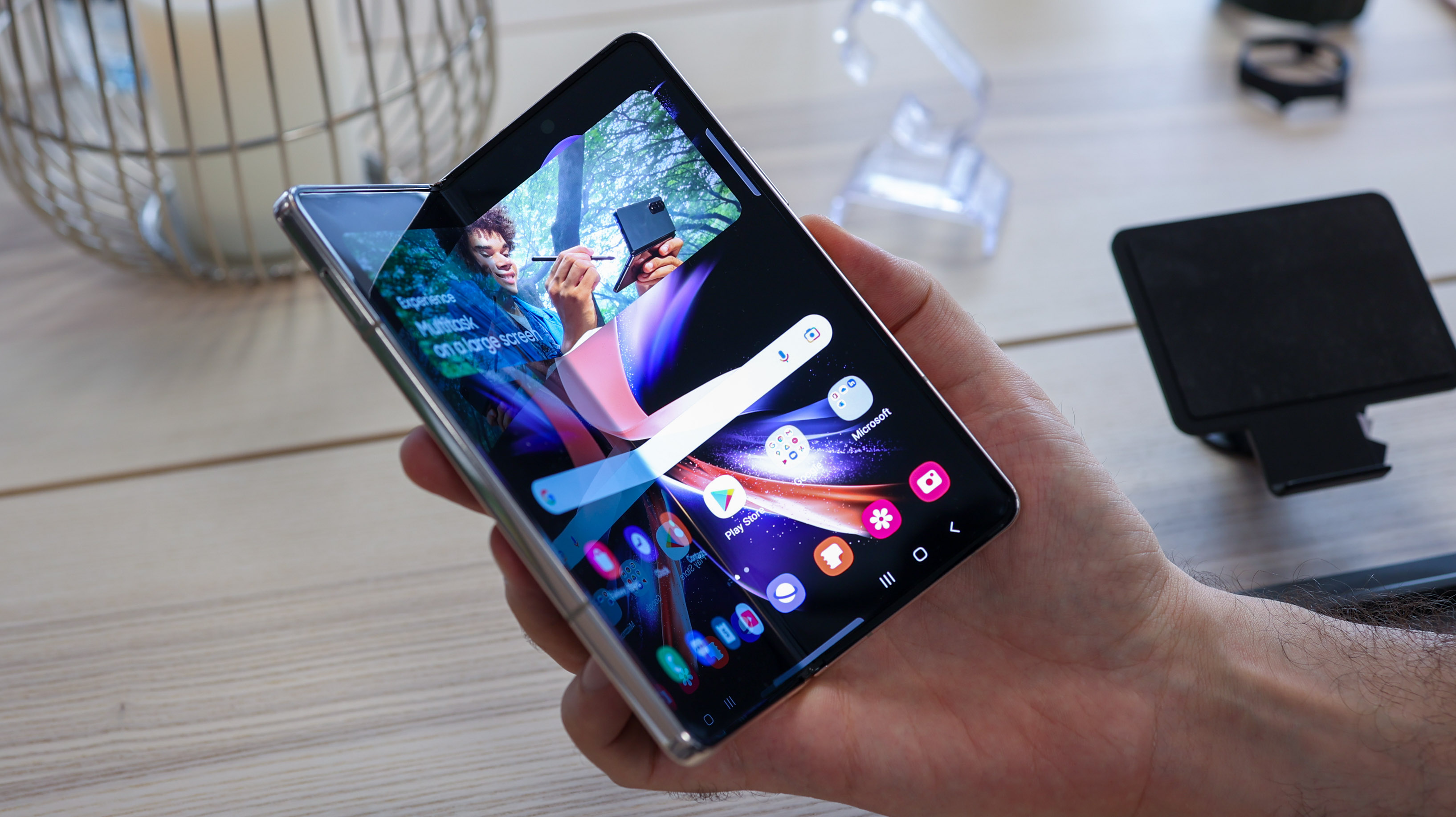
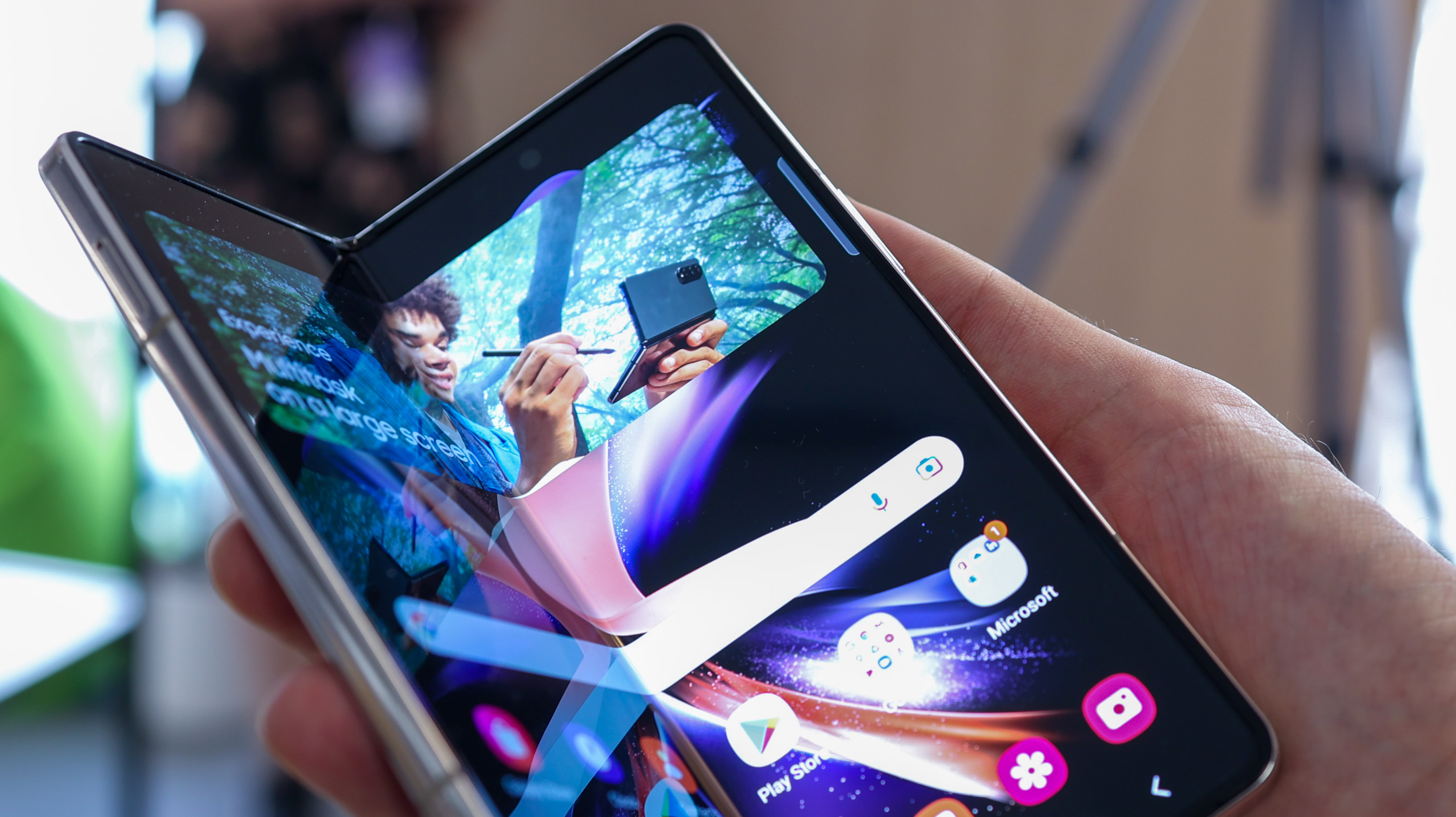
The main camera on the Galaxy Z Fold 4 is a high-resolution 50MP sensor matched with an f/1.8 lens. There's also a 12MP ultra-wide camera, and a 10MP, 3x zoom telephoto camera. The front selfie camera on the cover display is also 10MP, while the in-display selfie camera clocks in at 4MP.
Samsung might not be loading up its foldables with its finest camera hardware, but thankfully, there's some smart software to help you get the best from them. Half fold the phone and place it on a surface, and the Z Fold 4 acts as its own tripod of sorts. If you open it up while taking a portrait, you can also give subjects a preview of the shot by duplicating your viewfinder to the front display.
Samsung Galaxy Z Fold 4: early verdict
Of course, we'd have loved to see a whole new, revolutionary flagship folding phone from Samsung, but that isn't what the Z Fold 4 is designed to be. Instead, this represents a few considered, incremental design improvements over last year's premier foldable, a power boost and some smart interface enhancements.
Costing £50 more than the Z Fold 3 did on launch at £1,649, it isn't worth upgrading to from its predecessor – we can say that much right now. For anyone new to foldables, though, or who's coming from a Galaxy Fold or Z Fold 2, this update seems like a solid choice, especially if you want pen input and a two-in-one device. Of course, if you're considering picking one up, you need to be okay with paying a premium – the Z Fold 4 is one of the most expensive mobiles money can buy.
As for how Samsung's flagship 2022 folding phone stacks up in the real world when it comes to battery life and performance, check back for the full review when we'll be able to say categorically whether the Z Fold 4 is indeed one of the best smartphones of 2022.
Read more:
out of 10
You'll notice there's a 0 here in the score box, don't fret, this hands-on pre-review is based on our first impressions of the Samsung Galaxy Z Fold 4 – check back in the coming weeks for our full review. While it's an incremental update, the Samsung Galaxy Z Fold 4 improves upon a winning formula, bringing back the water resistance, Wacom pen input, and styling that made the Z Fold 3 a mighty foldable, and adding hardware improvements and software flourishes.

Basil is a trained graphic designer and photography expert who geeks out over anything to do with digital imaging and sketching. Now a tech journalist and content director at a creative comms agency, he covers tech through a real-world lens, contributing to titles including Creative Bloq, Digital Camera World, Metro, T3, TechRadar and WIRED.
